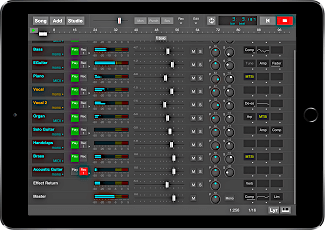

There is also a great tutorial on basic synthesis with AudioKit here. If you are new to iOS development, I highly recommend the Ray Wenderlich videos.
Knowledge of programming, specifically Swift & the iOS SDK. Mac or computer running Xcode 11 ( Free Download). Then open AU Example.xcworkspace in Xcode Requirements This will add AudioKit & AudioKit UI to project The correct directory contains a file called Podfile Using the Terminal app in your mac, change directories to the folder that contains this project. If you're using a newer version of Xcode, you may need to add AudioKit 4 manually without using CocoaPods. This repo branch uses CocoaPods to add AudioKit 4 to your project. If you're new to AudioKit, you can learn more and view getting started links: here. Example code written entirely in Swift 5 & AudioKit 4.  On screen "Piano" keyboard that can be customized. MIDI input for notes, pitch bend, mod wheel. ADSR Envelope (Attack, Decay, Sustain, Release). FX examples including Reverb, Tremolo, AutoPan, more. Use as an iOS AUv3 plugin in hosts like GarageBand, AUM, BeatMaker 3, Cubasis 3, and more. Complete music app example, full source included. Watch Video: PLATINUM SELLING PRODUCERS & STUDENTS BUILD APP WITH AUDIOKIT The AudioKit development team was led by Jeff Cooper and Matthew Fecher. This project was created with Award-winning professors Kennard Garrett & Henny tha Bizness at historic Morehouse College's music tech department. With this code, we hope to inspire the next generation of music app creators. AudioKit AUv3 Plugin & Stand-alone Example
On screen "Piano" keyboard that can be customized. MIDI input for notes, pitch bend, mod wheel. ADSR Envelope (Attack, Decay, Sustain, Release). FX examples including Reverb, Tremolo, AutoPan, more. Use as an iOS AUv3 plugin in hosts like GarageBand, AUM, BeatMaker 3, Cubasis 3, and more. Complete music app example, full source included. Watch Video: PLATINUM SELLING PRODUCERS & STUDENTS BUILD APP WITH AUDIOKIT The AudioKit development team was led by Jeff Cooper and Matthew Fecher. This project was created with Award-winning professors Kennard Garrett & Henny tha Bizness at historic Morehouse College's music tech department. With this code, we hope to inspire the next generation of music app creators. AudioKit AUv3 Plugin & Stand-alone Example








